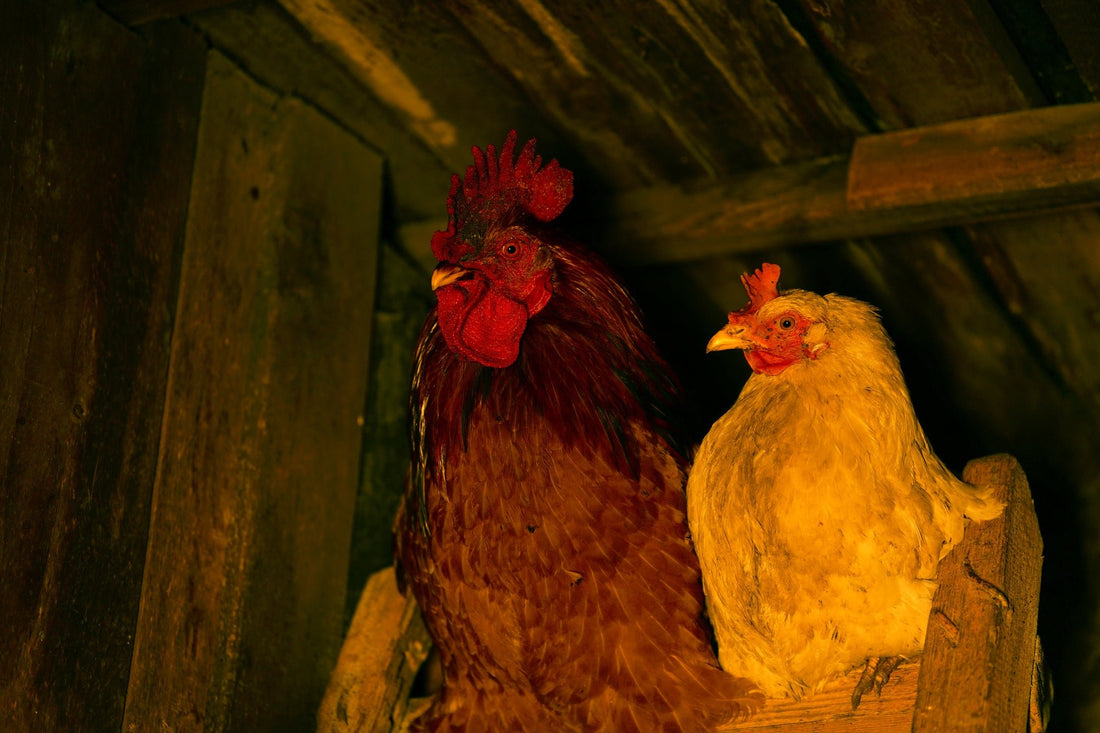Chickens are an everyday sight on many farms, often seen as gentle and familiar creatures. However, a closer look at their anatomy reveals eerie, enigmatic, and downright fascinating features. As the Halloween season approaches, we delve deep into the uncanny world of chicken anatomy to uncover some spine-tingling truths.
Beady-Eyed Visions
Chickens possess a remarkable eye structure. Unlike humans, who have three types of color receptors in their eyes, chickens have five. This means chickens can see a broader spectrum of colors, including ultraviolet light! Imagine them seeing spectral hues beyond our human perception. Also, their eyes are tetrachromatic, allowing them to perceive shorter wavelengths of light – a world bathed in colors that are invisible to the human eye.
The Inside-Out Blink
Ever observed a chicken blinking and felt a slight shiver down your spine? Chickens, like many birds, have a third eyelid called the nictitating membrane. It closes horizontally, unlike the usual vertical blink we're accustomed to seeing. This eerie "inside-out" blink provides moisture and protection to the chicken's eye. But it also gives them an otherworldly gaze that can be unsettling to some.
Bone-Chilling Bones
Chickens have hollow bones, an adaptation that makes flight possible for many birds. These bones are eerily lightweight and semi-transparent when held up to the light. The marrow inside, instead of being dense and fatty like in mammals, is more like a spiderweb, lacy and delicate.
Blood-Curdling Comb and Wattles
Those red appendages on top of a chicken's head (comb) and under their chin (wattles) might appear decorative. However, they serve a spine-tingling purpose: temperature regulation. Chickens don't sweat, so they use these blood-filled flaps to radiate heat away from their bodies. On a chilly evening, watching the comb and wattles shift color can be a surreal experience.
The Gizzard Grind
Chickens lack teeth, but that doesn't mean they can't break down food. Inside their digestive system is a unique organ called the gizzard. After swallowing their food whole, the edibles enter this muscular pouch filled with grit and stones the chicken has consumed. The gizzard then contracts, grinding the food using the stones in a manner reminiscent of ancient mortar and pestle grinding – a stomach that chews!
Egg-straordinary Egg Formation
Ever pondered the mysterious process of egg creation? The formation of an egg inside a hen is almost alchemical. It begins with the yolk being released into the oviduct. As it travels down this internal assembly line, the egg white (albumen), membranes, and shell are added. The process, taking about 24-26 hours, culminates in the laying of the egg. But here’s the spine-tingling part: sometimes, due to stress or disruptions, a hen might lay an egg inside an egg – a rare but documented phenomenon.
Feet of the Underworld
A chicken's foot is an iconic symbol in many cultures, often associated with magical practices. The scaly, clawed feet may remind one of mythical creatures or stories of demons and goblins. In actuality, those scales are made of keratin, the same material as human fingernails. As chickens age, the scales become more pronounced, lending older chickens an even more otherworldly appearance.
The Heartbeat of Shadows
Chickens have a heart rate that might make your own heart skip a beat: it can reach up to 300 beats per minute! This rapid heartbeat is essential for their high metabolic rate. If you were to hold a resting chicken closely (and it's comfortable enough), you might feel the frantic pace of its tiny heart against your hands.
Mysterious Molting
During the molting process, chickens shed old feathers to make way for new ones. This natural process can make a chicken look like something straight out of a gothic horror tale. They can appear ragged, with patches of bare skin showing, making them look like feathered phantoms wandering the coop.
Eerie Earlobes
Yes, chickens have earlobes! While they are not the fleshy kind humans have, the color of a chicken's earlobe can usually predict the eggshell color. Red or brown earlobes often (but not always) indicate brown eggs, while white earlobes suggest white eggs. It’s like a magical tell-tale sign of the treasures they bear.
Conclusion:
From their hauntingly unique vision to their uncanny digestive processes, chickens are more than meets the eye. These seemingly ordinary birds harbor a host of anatomical wonders, many of which fit perfectly into the eerie ambiance of the Halloween season. So, the next time you come across a chicken, take a moment to appreciate the mysterious marvel that it truly is.

